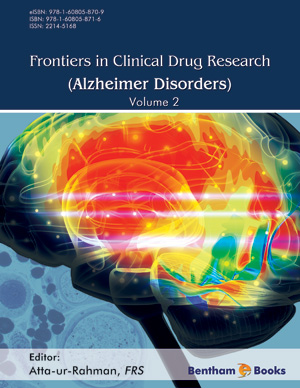Abstract
Alzheimer Disease (AD) is the most common form of dementia in the world and is a cause of infirmity in the older people. The prevalence of this disorder increases exponentially with age ranging from approximately 2% at the age of 60-65 years to more than 30%-35% in people older than 80 years.
AD pathological modifications begin to accumulate for years, before all typical (emotional, physical, or cognitive) symptoms emerge. The classical hallmarks of AD are senile plaques and neurofibrillary tangles, which consist of amyloid-β (A) and hyper-phosphorylated tau proteins. The exact aetiology of this pathology is still unclear, and it is considered a complex multifactorial disorder in which genetics, epigenetics and environmental factors contribute to prompt neurons towards a premature death.
For the last 20 years, the “amyloid cascade hypothesis” has dominated research aimed at understanding, preventing and curing the AD. Several strategies have been studied for setting up therapies against amyloid deposits, which have been successful in curing the disease in some animal models, but they have never been effective in human AD patients. These failures have supported the hypothesis that the up-regulation of amyloid precursor protein (APP) and Aβ could be necessary to respond to inflammation/oxidative stress-associated neurodegeneration. In particular the oxidative stress associated to the increase of free radicals have been demonstrated to be involved in the etiopathogenesis of AD and enhanced levels of oxidative injuries markers in cellular macromolecule (lipids, DNA, proteins) have been found in the central nervous system and peripheral tissues of AD patients. These findings demonstrate that reactive oxygen species (ROS) targeted therapy can be successful in AD treatment.
Epigenetics refers to all meiotically and mitotically reversible heritable changes in gene expression which occur independently of DNA sequence, and are principally due to changes in DNA methylation, chromatin structure and microRNA (miRNA) expression. Emerging evidences from animal and human studies suggest that epigenetic mechanisms are involved in learning and memory, and that many of biological pathways dysregulated in AD are controlled through epigenetic modifications. This rapidly expanding field of neuroepigenetics seems to be particularly promising in identifying new aspects and, above all, new therapeutic strategies for treating this disorder. The approval of epigenetic drugs for the treatment of other diseases (like cancer) opens the door for the development of similar drugs also for AD.
Keywords: Alzheimer’s Disease, amyloid plaques, antioxidant, DNA methylation, epigenetics, free radicals, histone modifications, metals, mitochondria, microRNA, oxidative stress, reactive nitrogen species (RNS), ROS.






















